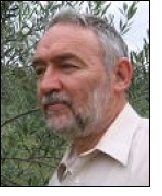ARTHUR RICHARD GILMOUR
 Arthur Gilmour graduated from Sydney University with a BScAgr (Hons) degree in 1970. He then spent ten years as a biometrician with NSW Agriculture at Sydney and then at Trangie until he gained study leave for a PhD degree at Massey University with Professors A.L. Rae and R.D. Anderson. Dr Gilmour's PhD involved theoretical and applied aspects of the estimation of variance components for categorical data from mixed models. The generalized linear mixed model has been the major research interest of Dr Gilmour, motivated by problems arising in research data generated by agricultural scientists.
Arthur Gilmour graduated from Sydney University with a BScAgr (Hons) degree in 1970. He then spent ten years as a biometrician with NSW Agriculture at Sydney and then at Trangie until he gained study leave for a PhD degree at Massey University with Professors A.L. Rae and R.D. Anderson. Dr Gilmour's PhD involved theoretical and applied aspects of the estimation of variance components for categorical data from mixed models. The generalized linear mixed model has been the major research interest of Dr Gilmour, motivated by problems arising in research data generated by agricultural scientists.
Dr Gilmour's first generalized linear models software was known as REG and was continuously refined during his PhD and on until 1988. He later developed a package known as TwoD to perform spatial analysis of field experiments. Dr Gilmour tirelessly assisted numerous experimenters and researchers in the analysis and interpretation of their data using these packages, often with little or no recognition.
In the late 1980s, Dr Gilmour turned his attention to genetic evaluation software and contributed enormously to the analytical procedures and statistical approaches used behind the scenes in LAMBPLAN and WOOLPLAN. The Lambplan committee in recognition of these achievements gave him a special award in 1995.
Internationally, Dr Gilmour is best known for his remarkable achievements relating to a software package called ASREML. This programme was based on the discovery of a computationally straightforward approach to derive the so-called information matrix required to estimate variance components in mixed models using maximum likelihood. Prior to the early 1990s the likelihood was maximized by derivative-free techniques or from one of two numerically demanding approaches for deriving the matrix of second derivatives. It is now well known that the average of the matrix obtained by these two approaches is easier to obtain than either of the previous techniques.
ASREML has had a major impact on statistical computing in many areas of statistics, but notably in plant and animal breeding. One only needs to browse proceedings from recent AAABG conferences to recognize the ASREML programme is the most referenced bibliographic item.
In New Zealand, ASREML has been used widely to develop procedures for routine analysis of dairy cattle, sheep, deer and dairy goats. In the United Kingdom, in conjunction with Dr Robin Thompson with whom Dr Gilmour has worked closely, ASREML will be incorporated into GENSTAT.
Not only has ASREML been made readily available to researchers throughout the world, but a discussion group has also been set up that is better described as "ask Arthur a question". His generosity in time to individually answer and his resistance to describing perhaps 50% of the questions as stupid are exemplary.
 Arthur Gilmour graduated from Sydney University with a BScAgr (Hons) degree in 1970. He then spent ten years as a biometrician with NSW Agriculture at Sydney and then at Trangie until he gained study leave for a PhD degree at Massey University with Professors A.L. Rae and R.D. Anderson. Dr Gilmour's PhD involved theoretical and applied aspects of the estimation of variance components for categorical data from mixed models. The generalized linear mixed model has been the major research interest of Dr Gilmour, motivated by problems arising in research data generated by agricultural scientists.
Arthur Gilmour graduated from Sydney University with a BScAgr (Hons) degree in 1970. He then spent ten years as a biometrician with NSW Agriculture at Sydney and then at Trangie until he gained study leave for a PhD degree at Massey University with Professors A.L. Rae and R.D. Anderson. Dr Gilmour's PhD involved theoretical and applied aspects of the estimation of variance components for categorical data from mixed models. The generalized linear mixed model has been the major research interest of Dr Gilmour, motivated by problems arising in research data generated by agricultural scientists.